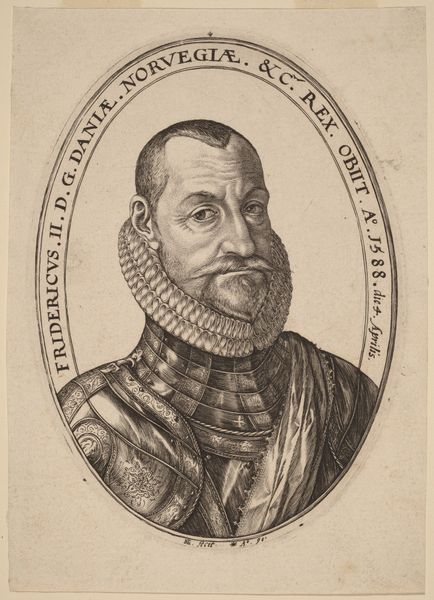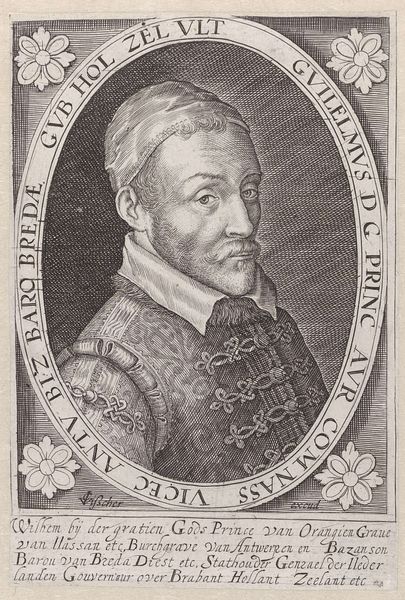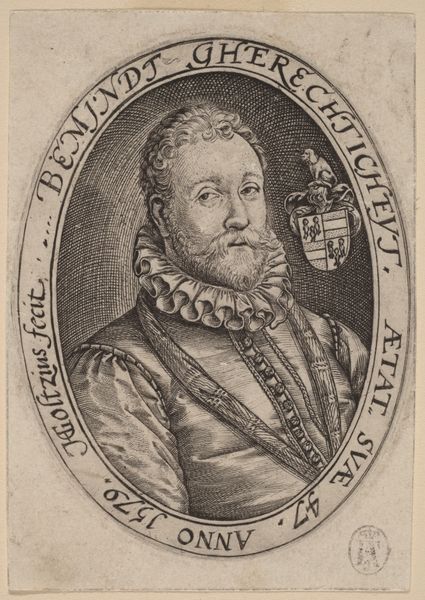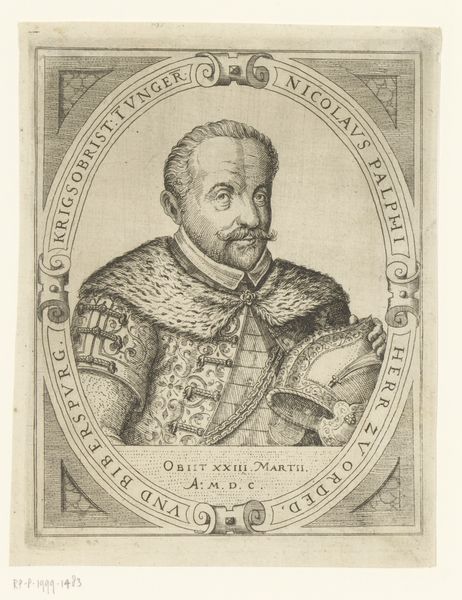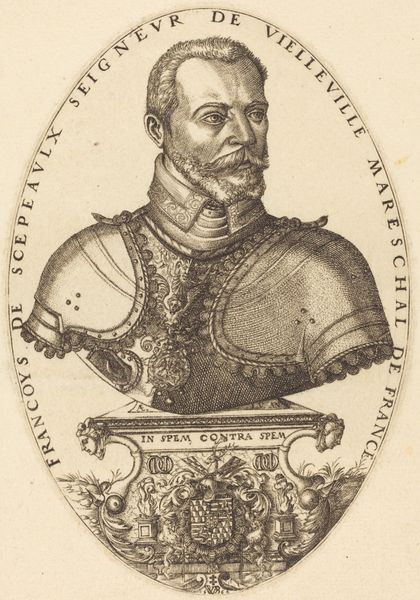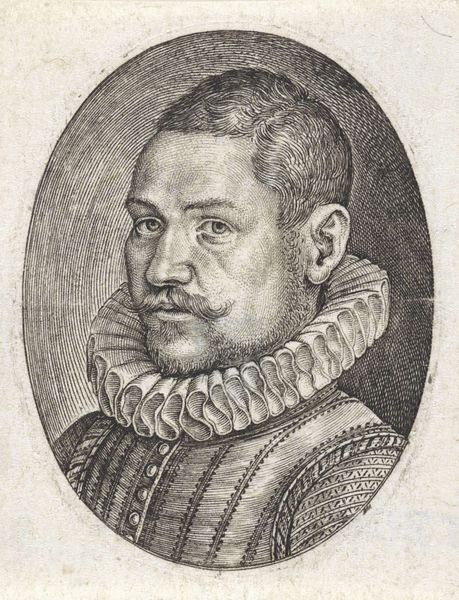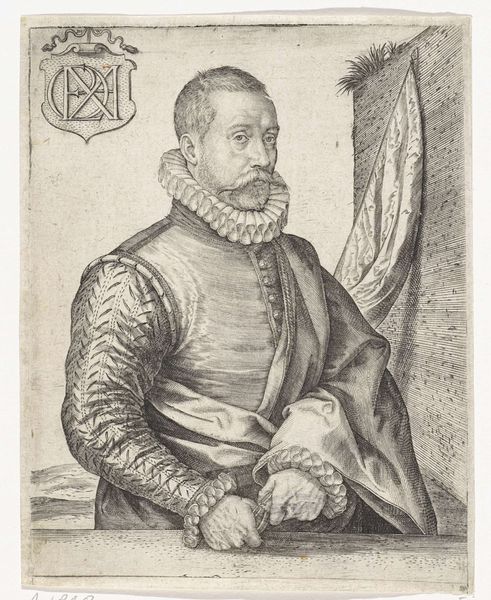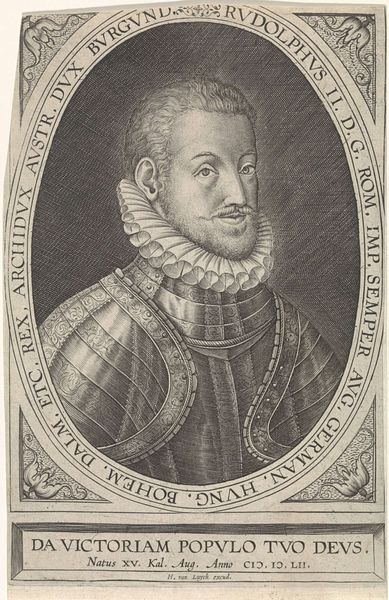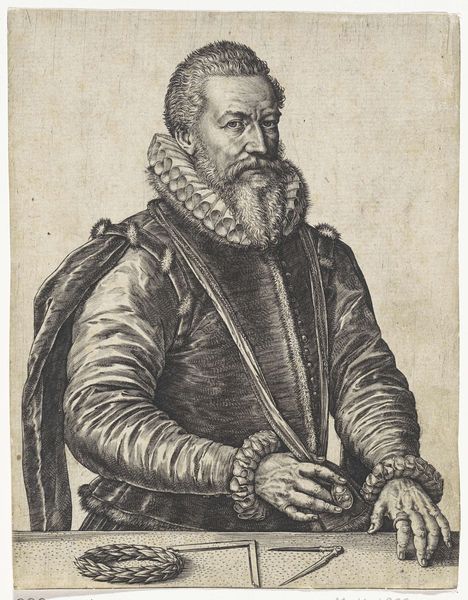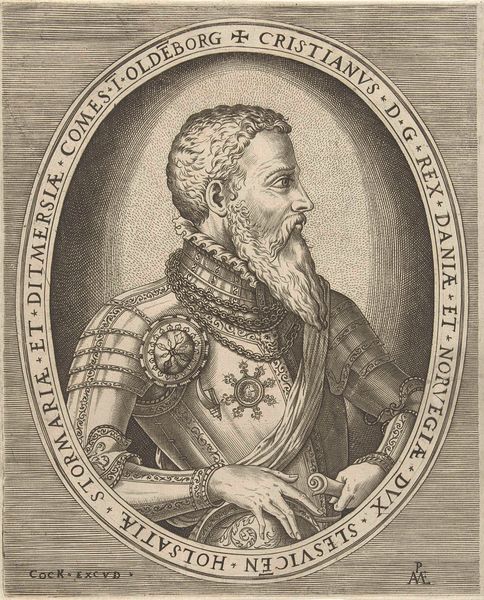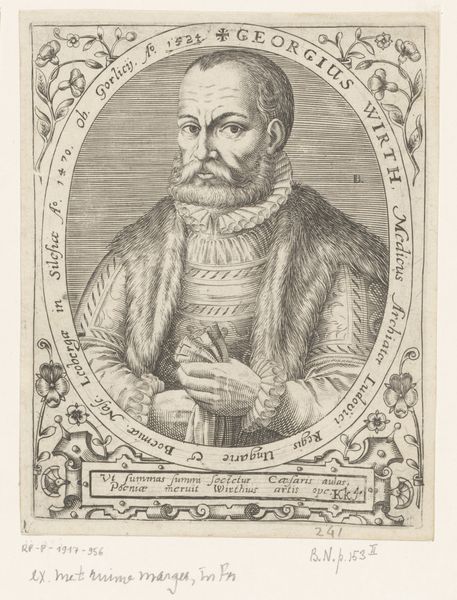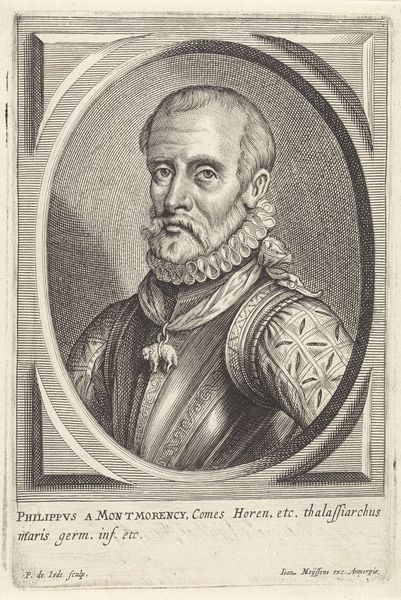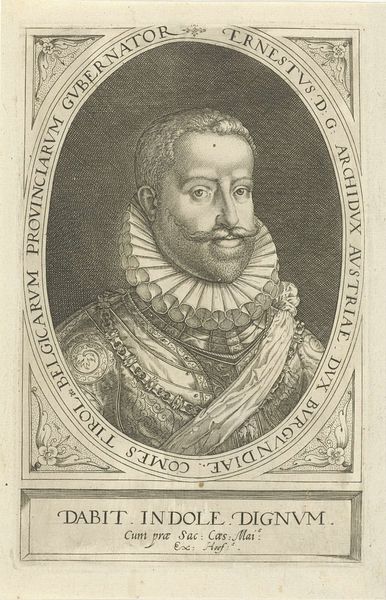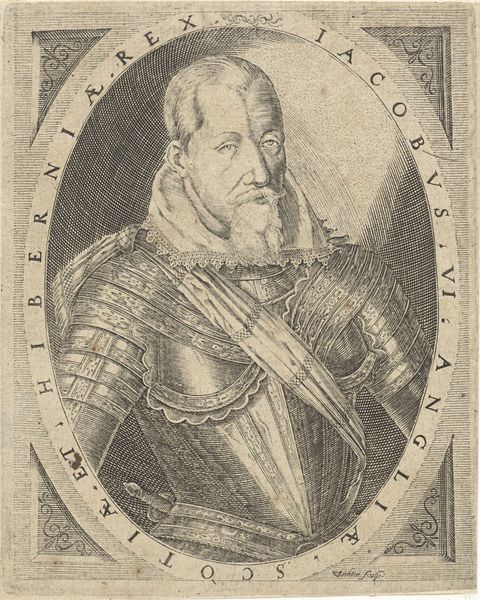
engraving
#
portrait
#
figuration
#
form
#
11_renaissance
#
line
#
northern-renaissance
#
engraving
Dimensions: height 45 mm, width 33 mm
Copyright: Rijks Museum: Open Domain
This is a portrait of a man, made by Wierix, sometime between 1550 and 1620. It’s an engraving, a printmaking technique that was very popular in the Netherlands at that time. What I find fascinating here is the way that the artist uses the conventions of portraiture to tell us something about the sitter's social standing. Look at the man's clothing, especially the elaborate ruff around his neck. This was an expensive item to produce, so wearing one was a sign of wealth and status. The man's facial expression is also interesting. He looks directly at the viewer, with a slightly stern expression. This was a common way of portraying powerful people. This was a time of great social and political upheaval in the Netherlands, with the Dutch revolt against Spanish rule. Portraits like this were a way for people to assert their identity and their place in society. As an art historian, I am interested in understanding the social and political context in which this portrait was made. By looking at things like the sitter's clothing, facial expression, and the way the portrait was displayed, we can learn a lot about the values and beliefs of the people who lived at that time.
Comments
No comments
Be the first to comment and join the conversation on the ultimate creative platform.
